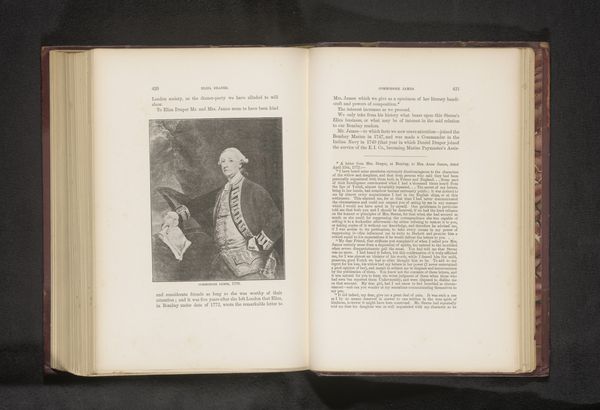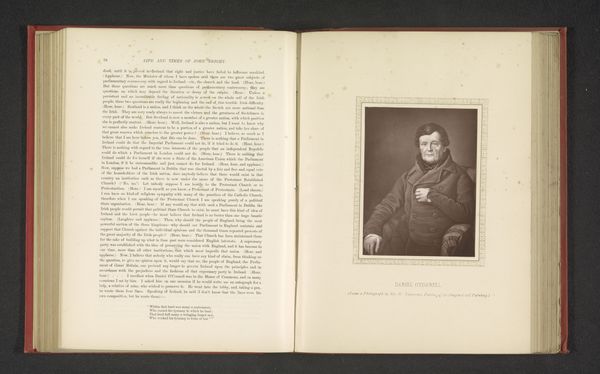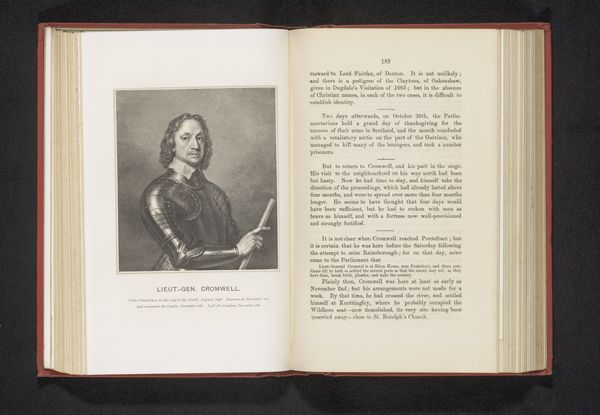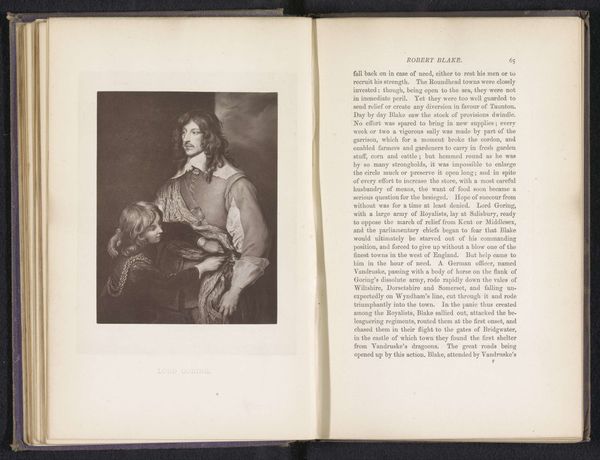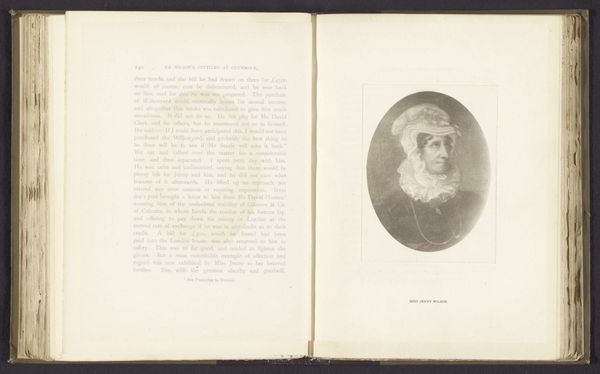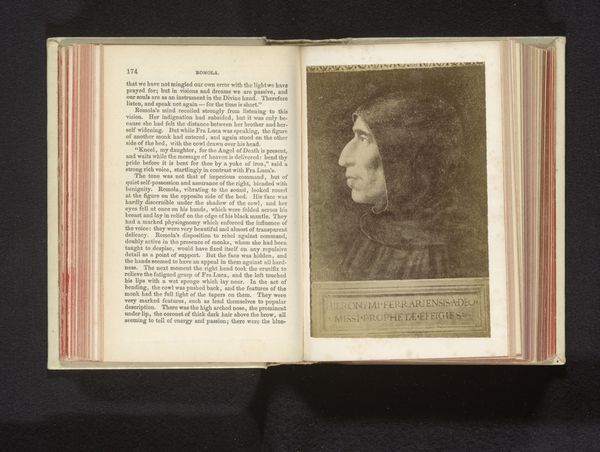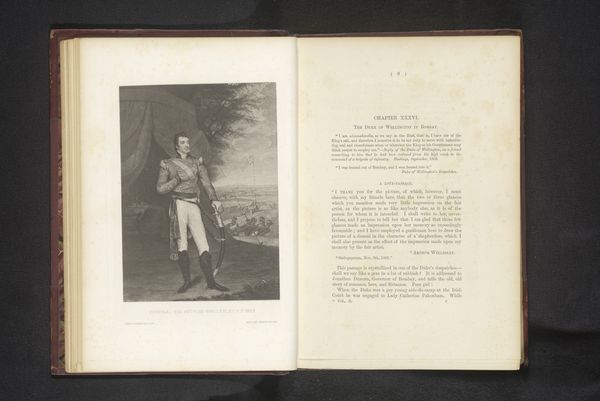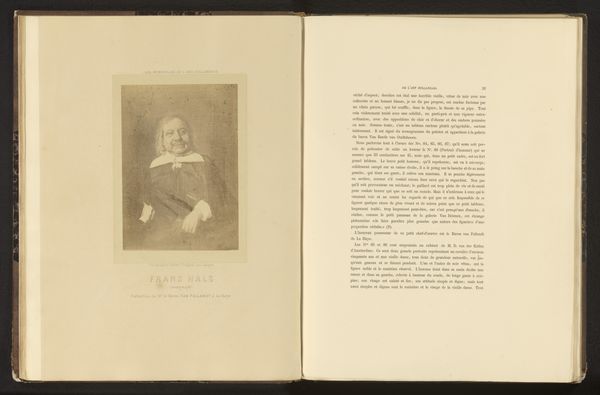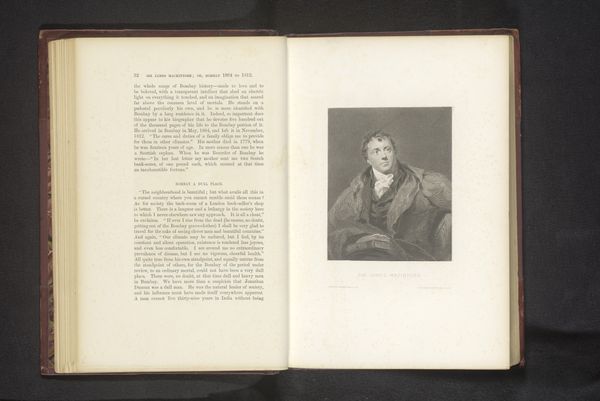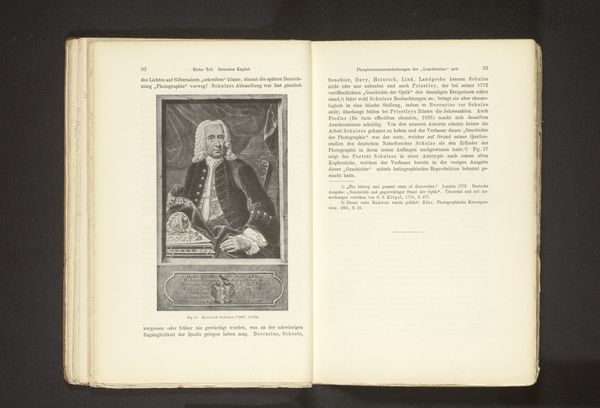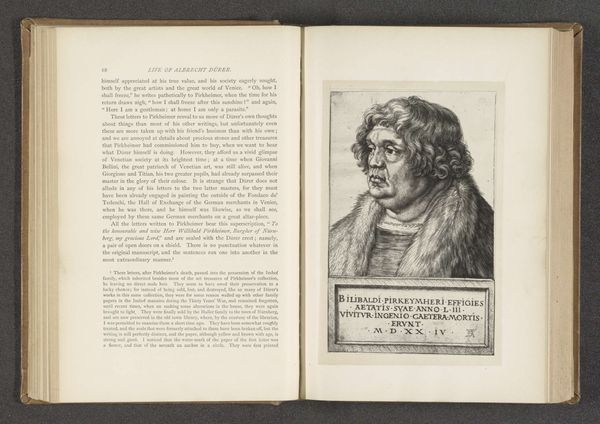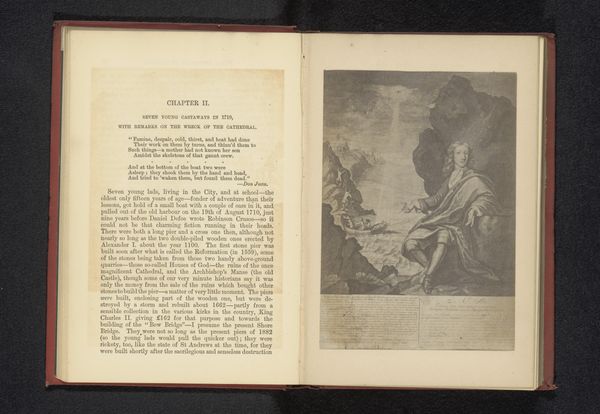
Dimensions: height 100 mm, width 86 mm
Copyright: Rijks Museum: Open Domain
Curator: Looking at this page, we find a reproduction of a portrait titled "George Monk, duke of Albemarle." This print on paper, using ink and engraving, predates 1885. It's currently held at the Rijksmuseum. My first thought: imposing. Editor: Imposing, certainly, but also rather idealized, wouldn’t you say? Look at the precise lines etched into the paper; note the texture achieved mimicking fabric. We're dealing with material processes intending to portray not just the man, but also the office, and the society from which that man arose. The value here is the construction. Curator: And that construction utilizes specific visual tools. Consider the circular frame isolating the subject. Circles traditionally symbolize wholeness and eternity. In portraying the Duke thusly, doesn’t it insinuate a sense of timeless importance and absolute power? Plus, there is that knowing gaze. He seems to be looking into the soul of the viewer, asserting his importance through his eyes alone. Editor: Well, while the gaze is compelling, what I really note are the clothes. His suit of armor, although perhaps an artistic embellishment rather than the garments he wore on a regular basis, clearly evokes a period defined by war and societal restructuring. His visible wealth, which we could argue, resulted from the control of resources and means of violence. Curator: The armor definitely adds another layer. It isn’t just protective wear; it's symbolic armor as well, a shield against criticism or challenge. But then the soft lace collar provides a certain tenderness or humanity beneath the militant signifiers. I can't help but see a calculated performance being delivered here, designed for lasting appeal. Editor: Performance absolutely! An image manufactured for circulation and consumption. Think about the labor involved in creating this image. This wasn't simply "art" – it was a product made by someone, likely in a workshop, perhaps as part of a propaganda campaign to build his legacy. We're really studying a fascinating document that is part artistry and part manufacturing. Curator: An angle I appreciate. It pulls us back to the artwork's socio-historical positioning rather than solely lingering in aesthetic interpretation. Editor: Precisely, and hopefully offering others a path for future investigation as well.
Comments
No comments
Be the first to comment and join the conversation on the ultimate creative platform.
